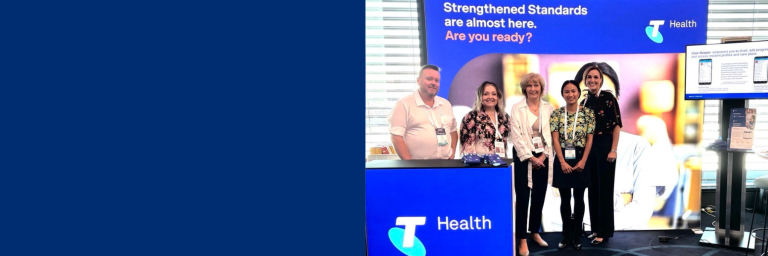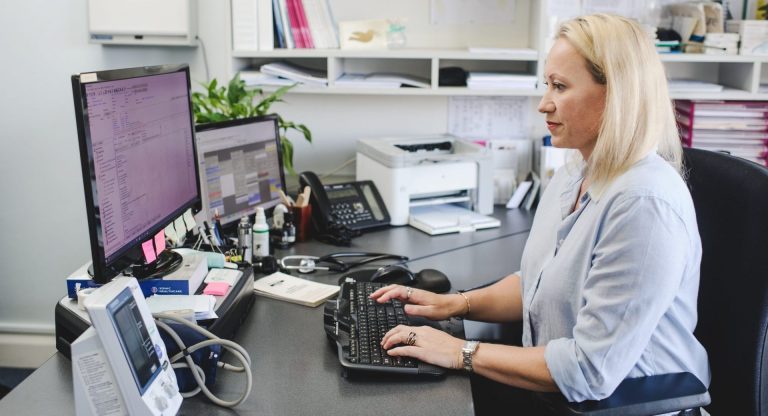The Gender Diversity in Australia’s Digital Health Workforce 2024 Report (the Report) published by Telstra Health in conjunction with RMIT University was based on the 2023 census on gender diversity and aims to address the lack of research and data on this topic in digital health, both in Australia and internationally.
The report was launched last week at the Digital Health CRC (DHCRC) inaugural Digital Health Expo Series event in Melbourne, in collaboration with Telstra Health, to showcase the 2023 Specialist Digital Health Workforce Census project. The 2023 Census was facilitated by the DHCRC in partnership with RMIT University, The University of Melbourne, Telstra Health, the Australian Department of Health and Aged Care, working closely with a number of agencies including the Australian Library and Information Association Health Libraries Australia, Australasian Institute of Digital Health, and the Health Information Management Association of Australia.
In 2023, the Census included a subset of questions from Telstra Health’s Brilliant Connected Women in Digital Health Initiative, initially implemented in 2021 and has assisted in the development of the 2024 special report.
The Report acknowledges there have been positive developments between the 2021 and 2023 censuses but are also areas that need further industry focus, including addressing gender pay equity, with women earning $500 – $1,500 less on average per week before tax than men.
Other highlights from the report include:
- 10 per cent more women have more than 10 years’ digital health experience compared to three years ago
- Over 97 per cent of women believe progress and change needs to be made to reach gender equity
- 34 per cent of women were managing others compared to 13 per cent of men
- 55 per cent of women felt they needed to prove themselves in the workplace compared to 50 per cent of men.
Dr Clare Morgan, Digital Health CRC’s Deputy CEO and Director of Research, Translation, and Commercialisation, hosted the Digital Health Expo and recognised that diversity is more than just gender. “The digital health workforce should be representative of the population it serves. Diversity in age, cultural background, ability, race, religion, and sexual orientation are all just as important as gender,” Dr Morgan said.
Professor Kerryn Butler-Henderson, co-lead on the DHCRC project, presented the findings of the Report with great insight into the rapidly changing digital health industry.
“When we look at the data from the past three censuses over the last five years, we see a growing pattern across the workforce. The more traditional roles that were once paper-focused, such as health librarians and clinical coders, are held by older women, whereas the roles that have emerged over the past two decades, such as informatics, technology, and data science roles, are predominantly held by younger men. This is a concerning trend seen in other fields that we need to change today,” said Professor Butler-Henderson.
Professor Kathleen Gray, Professor at the University of Melbourne, co-lead of the Project and panellist at the Diverse Digital Health Workforce event, says, “Elevating the status of women in digital health management, investment, research, and innovation roles can bring greater sensitivity to these issues.”
“However, achieving this workforce reform has to build on a broad base of women with secure work in specialist digital health roles. The census data can help to assess, target, and overcome obstacles to women’s representation in the digital health workforce.”
Managing Director at Telstra Health, Elizabeth Koff recognises the need for collaboration and diversity to drive the sector forward.
“It is important to maintain a commitment to fostering diversity and inclusion in our workplaces and pave the way for a sustainable sector in which all people have an equal opportunity to improve the healthcare system through technology and digital health innovations,” Koff says.
Co-author of the report, Dr Salma Arabi, shares that there are implications of the findings from the report. “We need to mandate formal digital health training, address the barriers to career advancement for women in technical fields, and consider intersectionality, such as First Nations status, disability, and migration status are creating additional workforce gaps beyond gender.”
Ms Anja Nikolic, CEO of AIDH celebrates the positives we have seen in the report but also shares her thoughts on the areas of concern.
“While we celebrate the strides made in increasing women’s representation and experience in digital health, it is unfortunately not surprising to see gender disparity in leadership and remuneration in a female-dominated workforce. The 2024 report underscores the urgent need to address persistent issues such as gender pay equity and the underrepresentation of women in senior roles. This also extends to all kinds of diversity, not just gender. A diverse DH workforce representative of the population will be better placed to ensure our DH systems are inclusive and guarantee the best health outcomes for everyone,” says Ms Anja Nikolic.
In Australia, women are under-represented in science, technology, engineering, and mathematics (STEM) with only 15 per cent of STEM-qualified jobs held by women. Among senior management roles, women only make up 25 per cent of these positions, and only 10 per cent of CEO-level roles are filled by women [1].
[1] Australian Government, D. of I., STEM Equity Monitor. [online] Industry.gov.au. Available at: https://www.industry.gov.au/publications/stem-equity-monitor
2024 reportDiversityReport_Final

Connect with our team
Get in contact to discover how our technology and solutions can help your organisation.
Contact
 Visit
Visit 





